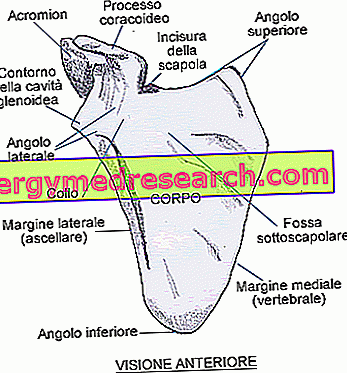Generality
Artificial insemination is a medically assisted procreation technique used in the treatment of infertility .
Essentially, the method involves artificially introducing the male seed into the woman's reproductive apparatus.

Artificial insemination is performed during the periovulatory period on a spontaneous cycle or after a moderate pharmacological stimulation. The aim is to favor the spontaneous meeting of the two gametes (women's oocytes and human spermatozoa) in the female body.
The chances of becoming pregnant vary from 10% to 15% per attempt, depending on the underlying pathology and the age of the patient.
What's this
Artificial insemination is a first-level technique of medically assisted procreation (MAP) . This method is therefore one of the simplest and least invasive therapeutic options recommended for a couple who wants to have a child, but who cannot spontaneously undertake a pregnancy.
Note
Like the other methods of PMA, artificial insemination is indicated by doctors as part of a course of treatment, in cases in which the infertility of at least one of the two partners is ascertained and there are no other effective therapeutic methods to resolve this condition .
Artificial insemination simply mimics natural reproduction: the spermatozoa, selected anteriorly in the laboratory, are artificially deposited in the reproductive apparatus of the woman, next to ovulation. Therefore, the meeting of the male gametes with the oocyte and fertilization normally takes place within the female genital apparatus.
Artificial insemination is useful especially when spermatozoa have difficulty overcoming vagina and cervix due to an obstacle or a lack of quantity or quality of sperm.
Artificial insemination techniques
The methods of carrying out artificial insemination differ according to the site where the seminal fluid is deposited:
- Intrauterine insemination (IUI) : technique most used, in which the spermatozoa are introduced directly into the uterus;
- Intracervical insemination (ICI) : spermatozoa are introduced into the cervical canal. This method is preferred when there is no possibility of depositing the sperm in the vaginal arches.
- Intraperitoneal insemination (IPI) : consists of the inoculation of the seminal fluid in the Douglas cord (between the rectum and the posterior wall of the uterus). This technique is not widely used, as it mostly predisposes to the development of anti-sperm antibodies.
- Insemination in tubas (ITI) : it is performed if the woman's tube is in perfect condition and when other techniques have not been successful. Through a catheter and under the constant guidance of ultrasound, the seminal fluid is introduced into the tubes, the natural site of the encounter between spermatozoa and oocytes.
Depending on the partner, artificial insemination can be distinguished into:
- Artificial marital insemination (IAC) or homologous: it involves the use of homologous gametes, that is coming from the components of the couple. This procedure may be useful in cases of scarcely reduced male fertility (total sperm concentration or number of these with high mobility slightly below normal) and in the absence of tubal occlusion in women.
- Artificial insemination from donor (IAD) or heterologous: it foresees the use of sperm coming from a seed bank; this method is suitable when the characteristics of the seminal fluid are such as to completely compromise the reproductive functionality.
When it is indicated
Artificial insemination is considered when targeted sexual relationships (that is, during the days of probable ovulation) and / or ovarian stimulation with drugs are associated with repeated failures.
Artificial insemination is indicated in case of:
- Sterility of unknown origin (ie which cannot be attributed to a specific cause);
- Cervical or tubal factors (anatomical and / or functional alterations of the cervix, cervical mucus or one or both Fallopian tubes);
- Mild to moderate alterations of some parameters of the seminal fluid, such that the spermatozoa have difficulty in reaching the uterus;
- Difficulty coital or impediments to the sexual act (such as, for example, in the case where the woman suffers from vaginismus or the male partner has been subjected to a vasectomy or manifest recurrent episodes of impotence).
Artificial insemination can compensate for the abnormalities of the male seed, since the preparation of the sample before the procedure helps to separate the vital spermatozoa and with preserved motility from those of inferior quality.
Artificial insemination can also be used if the male partner suffers from:
- Retrograde ejaculations (inside the bladder) caused by prostate surgery;
- Some pathologies of the genital tract, as in the case of hypospadias, in which it is difficult or impossible to have a complete sexual relationship.
As for women, artificial insemination is indicated in the presence of:
- Mild endometriosis;
- Ovulatory dysfunctions;
- Immunological factors (eg development of anti-sperm antibodies).
Requirements
As part of the treatment of infertility, before undertaking this approach, the doctor verifies that the following conditions exist:
- Tubal patricia ;
- Absence of infections in the male and female genital tract;
- Acceptable quality (movement and morphology) and sperm count .
In fact, for the success of artificial insemination it is essential that the oligo-astenospermia is mild or moderate and the tubal function is preserved (at least monolaterally).
How it happens
Artificial insemination is a medical-assisted procreation technique that respects the normal stages of reproduction processes. The technique is ambulatory, minimally invasive and not painful.
Ovulation stimulation
Artificial insemination can be performed on a spontaneous cycle or with the stimulation of ovulation through the administration of drugs (usually, recombinant gonadotropins), starting from the second or third day from the beginning of the menstrual cycle.
The goal is to induce the ovaries to produce more than one follicle and to obtain the simultaneous maturation of 2-3 egg cells, to increase the possibility that at least one of these is fertilized.
Ultrasound monitoring of ovulation, carried out during the course of therapy, makes it possible to modify the dose of drugs to optimize the ovarian response.
Based on the size of the follicles and the thickness of the uterine mucosa, it is possible to predict the time of ovulation of the current cycle.
Usually, as soon as two or three follicles have reached certain dimensions (about 18 mm), ovulation is induced with the injection of human chorionic gonadotropin (hCG), so as to be able to take advantage of the most suitable moment for insemination.
Preparation of seminal fluid
The seminal fluid necessary for artificial insemination is obtained by masturbation after 2-5 days of abstinence (in order to increase the level of spermatozoa) or through the puncture of the vas deferens.
The sample thus obtained is subjected to a special preparation in the laboratory, ie it is treated in such a way as to select and concentrate the mobile spermatozoa in a sufficient volume.
Insemination
The day of artificial insemination is fixed 36 hours after the administration of hCG. The seminal fluid of the partner or of a donor, previously examined and selected, is released into the patient's reproductive system (based on the method: uterine cavity, cervical canal or tube), through a thin catheter.
It is a simple, painless process and very similar to any gynecological examination.
After 14 days from the insemination the plasma dosage of β-hCG will be performed, to verify if a pregnancy has been successfully established.
Preparation
During hormonal drug therapy, ultrasound checks and hormonal dosages are performed to monitor the progress of ovulation.
Preliminary examinations
If a couple fails to procreate despite the targeted sexual intercourse, over a period of 12-24 months, it is necessary to investigate the root causes of conception difficulties from a clinical point of view.
Before performing artificial insemination, the doctor meets the two patients and draws up a medical history based on their medical history; subsequently, it prescribes a series of specific tests to exclude the presence of hormonal dysfunctions, pathologies affecting the uterus and tubes, abnormalities of the seminal fluid and so on.
| For the couple | For man | For the woman |
|
|
|
If the conditions encountered cannot be managed with pharmacological and / or surgical interventions, then if procreation is impossible or in any case the probability of starting a pregnancy is remote, recourse to medically assisted procreation may be indicated.
Based on the cause of infertility, the PMA center specialist can advise artificial insemination or another procedure more suited to the couple's profile.
Risks and possible complications
Artificial insemination usually takes place without complications and does not involve painful maneuvers.
The risks are limited, but the response to drugs to induce ovulation must be monitored with ultrasound scans of the ovaries and / or hormonal dosages. In the case of an excessive number of follicles, in fact, it is necessary to suspend the treatment in time, as the patient could develop the following consequences:
- Multiple pregnancy;
- Ovarian hyperstimulation syndrome.
Among the risks related to artificial insemination are also found:
- Abortions;
- Ectopic pregnancies.
The complications that can arise from the technique are:
- Infections;
- Allergies to the components of the seminal wash;
- Immunological reactions (development of anti-sperm antibodies).
Success rate
Artificial insemination is associated with good results. The chances of starting a pregnancy with this technique are 10-15% per treatment cycle.
The success rates of this technique vary based on:
- Causes of infertility present in the couple;
- Age of the patient;
- Qualitative and quantitative characteristics of seminal fluid;
- Type of pharmacological stimulation carried out.
Generally, if conception does not occur after 3-4 cycles of artificial insemination, it is advisable to reassess the case and move on to other, more sophisticated procedures, such as in vitro fertilization.



